How do we stop an enemy ship? What kind of weapon is needed to guard the Norwegian coast? The answer was a tern, followed by a penguin.
Penguin is a self-propelled missile. The characteristic missile is around three metres in length and weighs just under 400 kilos.
Around 1960, the Norwegian Armed Forces informed that they wanted a weapon that built upon the experiences with the Norwegian anti-submarine weapon system Terne. FFI collaborated closely with the industry in Kongsberg and Raufoss. Penguin became operational in 1972.
Penguin was originally developed as a Naval Strike Missile, launching from ships. Penguin has a heat-seeking control system developed at FFI. At the time, it was the most advance ‘fire-and-forget’ missile. This means that a target can be locked and the missile is fired. Thereafter, the operator can move on to the next target. This was a huge step forward compared to previous systems.
The situation was analogous to selling sand in the Sahara. Why would the world’s biggest weapons manufacturer purchase weapons from a small country like Norway?
When FFI began planning the Penguin missile, no one anticipated the billion kroner success it would become. The work would become one of the greatest Norwegian technological achievements. The story behind the weapon is long, both in terms of years and work hours. The development of the first version alone required around one thousand man-hours.
However, a lot of things could have gone differently on the day a woman named Sandy pressed the emergency button.
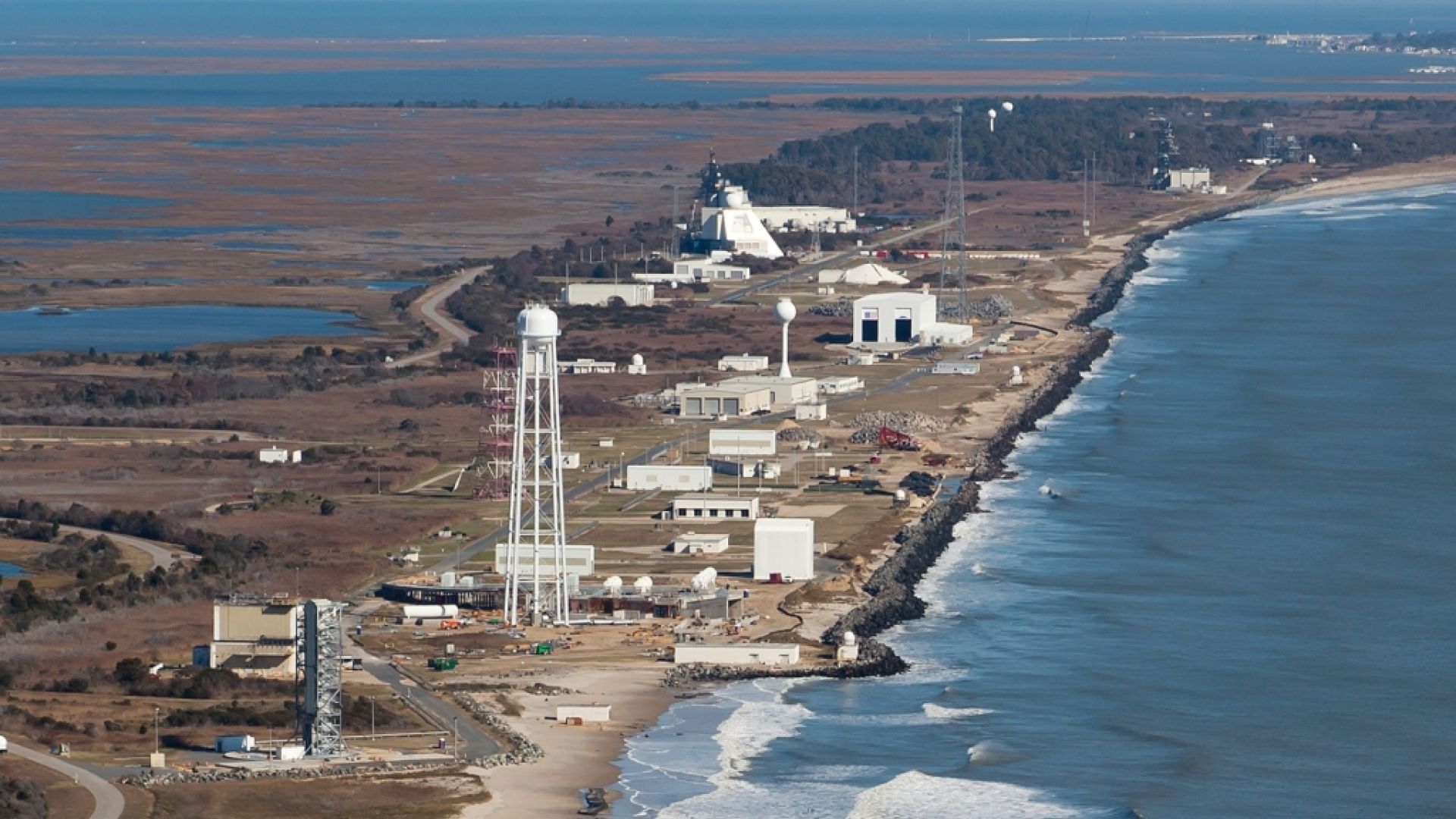
Ten miles southeast of Washington DC is Wallops Island. The location is known as one of NASA’s most important areas for experiments. Tens of thousands of rockets have been launched from here and numerous other attempts involving everything that can move in and outside the atmosphere.
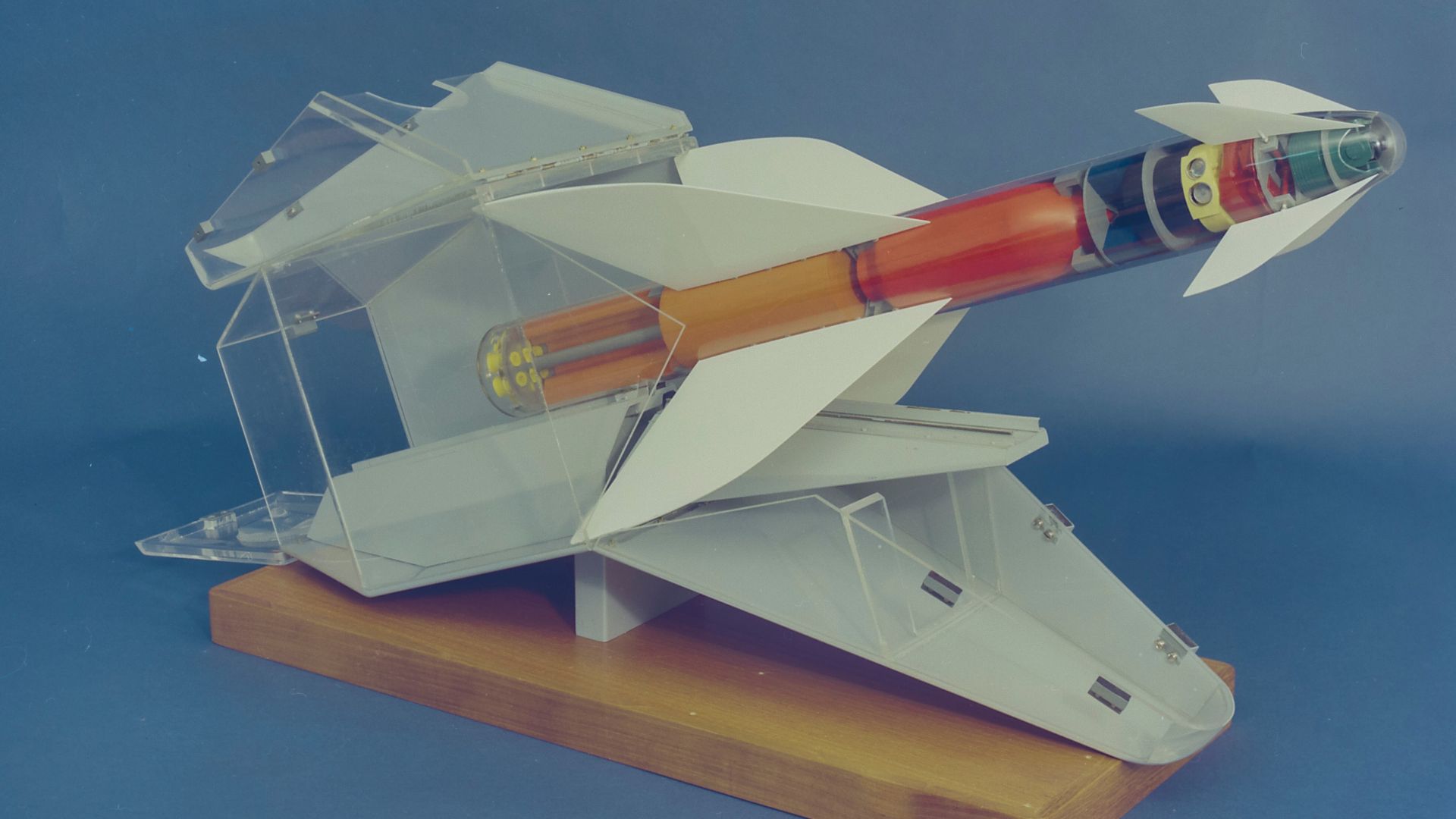
Tuesday, 11 January 1990, is an important day for a small Norwegian delegation. They have come from the Kongsberg Group, Royal Norwegian Navy and the Norwegian Defence Research Establishment to test a new Penguin.
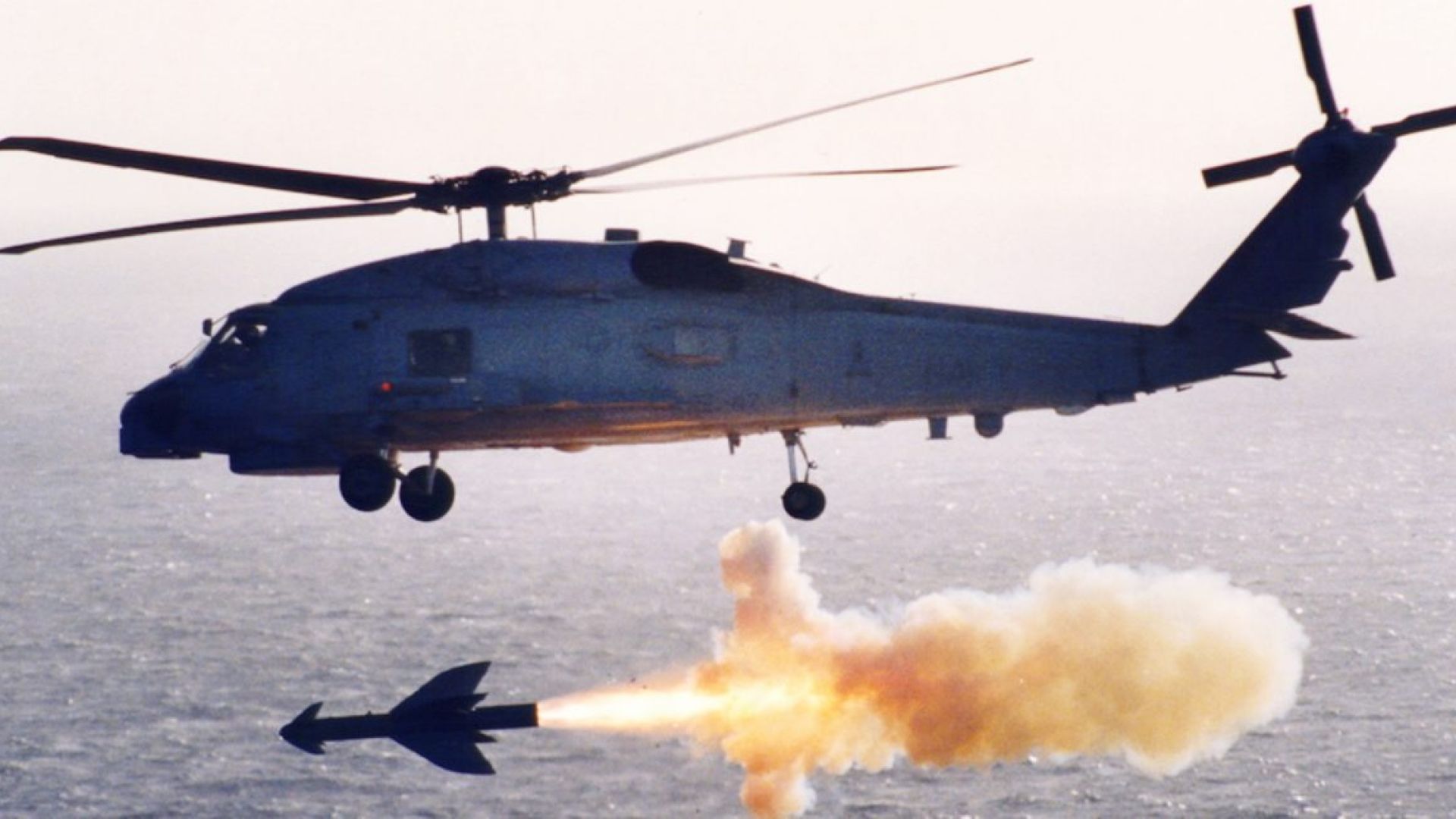
In total, the newest version of Penguin will now undergo eight test firings to potentially prove that it is good enough for the U.S. Navy to want it. The launch platform is a helicopter.
The flying penguin has two tasks: It is to travel a specific distance. Thereafter, it is to make a sudden turn and continue towards its target. The position is known.
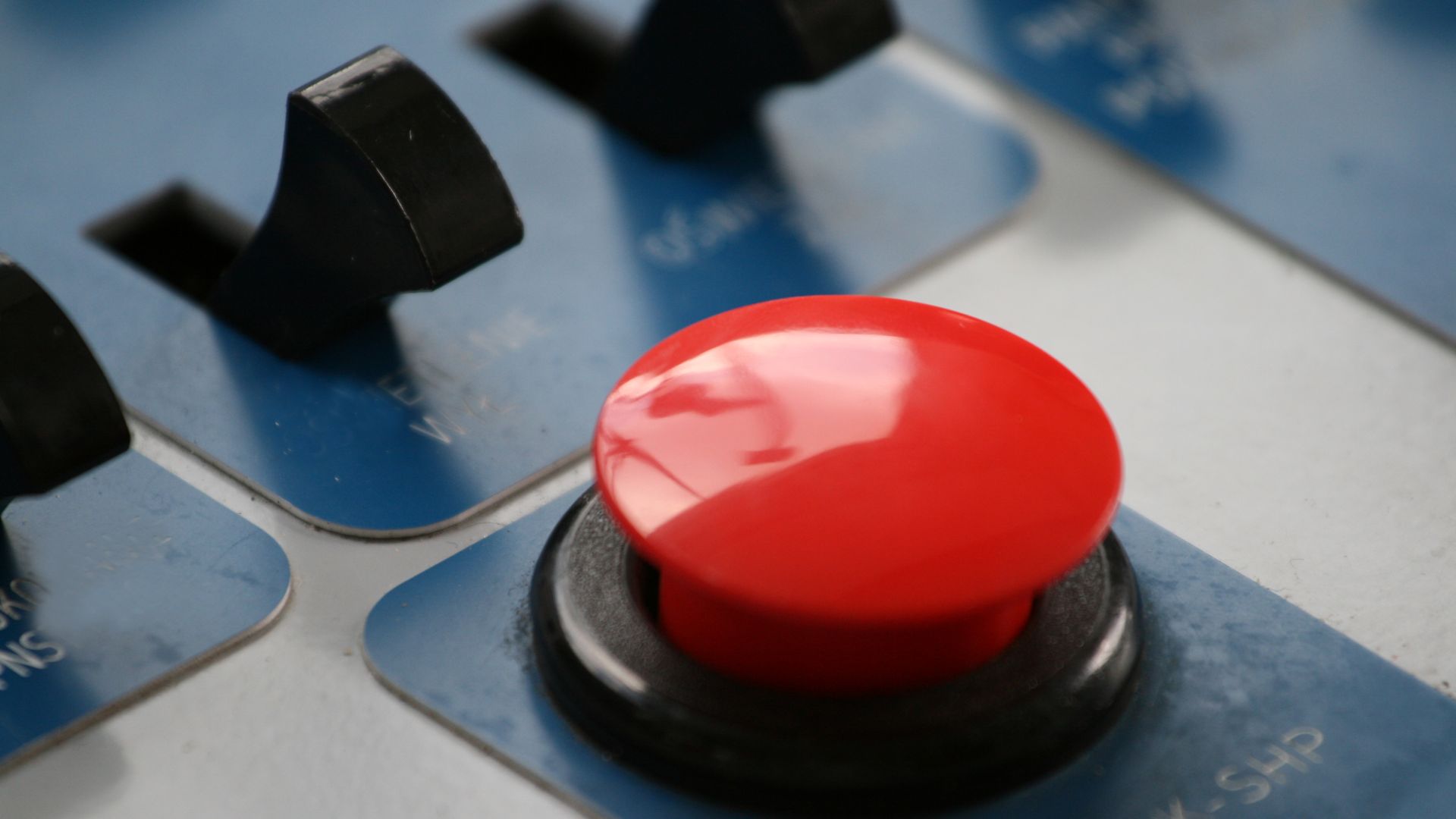
Sandy is sitting in the command centre on the mainland. She has one job; to press the emergency button. Her order is to terminate the Norwegian missile if it deviates from its planned trajectory.
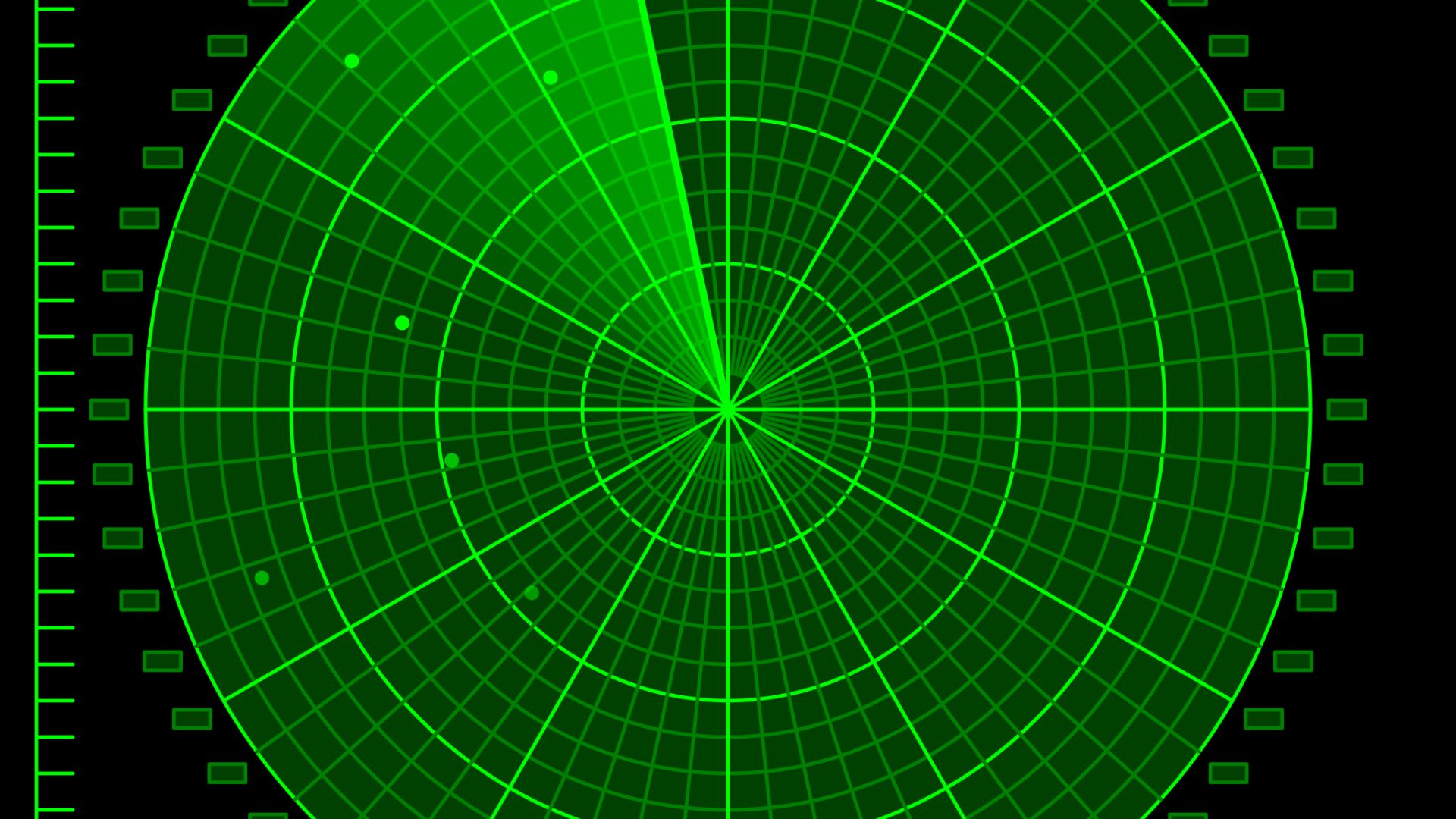
When Penguin MK2 MOD7 flies across the sky, Sandy’s radar screen indicates that something is not right. The missile has turned slightly too early. It has left the calculated trajectory.
The call to the fighter pilots tracking the missile is not answered. Sandy does as she has been ordered: She presses the emergency button. The missile breaks in half and crashes into the ocean.
What now?
Helge Morsund at Kongsberg Defence & Aerospace (KDA) had been working on this project for many years. He was part of developing and integrating the new missiles. Now, one of them was on the bottom of the ocean. After a minute, the only remaining sign of the Norwegian technological wonder was foam. Perhaps it was not much of a wonder after all?
“We were pretty nervous”, he explained.
The Norwegians were on their toes. Back home in Kongsberg and at Kjeller, the engineers were waiting for the Americans to forward the crucial telemetry data from the firing. This took three to four days.
The data showed that the missile had behaved exactly according to plan. The problem was the target. The vessel was using a sea anchor. The leeway meant that it drifted away from the position that had been programmed for the missile.
“When we explained this to the U.S. Navy, the launch was approved as a success”, said Morsund.
The next two tests on Wallops Island went smoothly. As did the subsequent four tests in Puerto Rico.
In fact, more than smoothly: The American officers expressed that they had never before seen such successful test firings of missiles.
At the same time, the situation was somewhat like selling sand in the Sahara. Why would the world’s biggest weapons manufacturer purchase weapons from a small country like Norway?” The opposition was clear. Several Members of the U.S. Congress were critical about negotiating a contract with Kongsberg. The case was not resolved until the Norwegian Ministry of Defence stepped in and negotiated an agreement with their American counterparts.
Everyone knew that the U.S. Navy’s test firings would mark a ‘before’ and ‘after’ for the newest Penguin missile. The contract with the U.S. Navy was signed on 5 October 1990. This opened the floodgates. Soon, Greece, Australia, Spain, Turkey, Brazil and New Zealand followed the Americans’ lead.
Penguin had hit the bull's-eye, once again.
The Tern came first
It began with an entirely different sea bird: The tern.
We have to rewind to 1947, two years after the second world war and the year after FFI was established. The Terne (Tern) Project was the first major undertaking at the Norwegian Defence Research Establishment. The Terne missiles were developed to attack submarines. This was a weapon intended for the Navy.
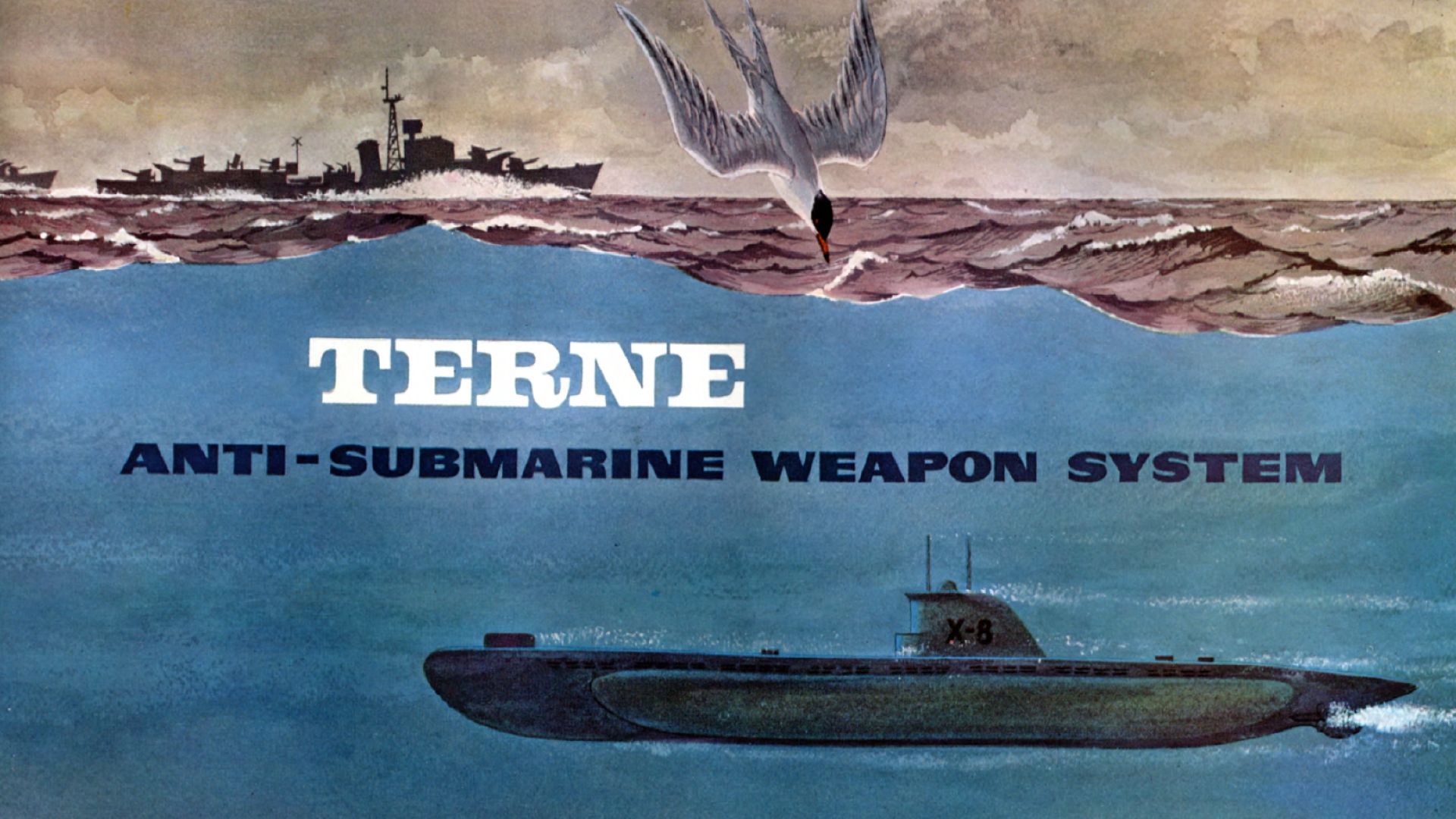
The name was fitting, considering the manner in which terns dive into the water and catch their prey.

Oddly enough, we have to travel to the mountains to study its humble beginnings. The year is 1950. Seven young men, equipped with skis and sunglasses, are on Hallingskeid. It all resembles an Easter ski trip.

The centre of this photo tells an entirely different story. The men are handling a Terne missile. But there are no submarine in the mountains, are there?
The deep snow on the Hardanger Plateau had a clear advantage: It provided missiles without explosives with a soft landing. The shells could therefore be reused. Over and over again. This made the tests cheaper to run.

In the pleasant spring sun, the researchers could thereby conduct the backtracking of the same Terne missile over and over again.
A boost for the industry
Terne was the result of work that began the year after FFI was established. Combatting submarines attempting to approach Norwegian ports was considered a major threat. Therefore, this was a very high priority for the Norwegian Armed Forces: In 1947, FFI was granted NOK five million, the equivalent of more than 100 million in 2021, to develop technical expertise in the field.
Now departments and colleagues had to think jointly, across disciplines. This was the seed of what is today known as the Triaxial Collaboration between the Norwegian Armed Forces, the defence industry and FFI.
At the same time, the institute laid the foundation for major changes in Norwegian industry. This project was intended to propel Norway into the space age, no less. In order to manufacture Terne, Kongsberg Weapons Factory had to undergo some necessary changes. This was the beginning of the high-tech company, Kongsberg. The Terne Project was also important for Raufoss Ammunition Factory, now known as Nammo. This laid the foundation for the company’s rocket engine production.
A different kind of success
Terne was also a well-developed system. However, it never became a best seller, despite an impressive Terne demonstration for the U.S. Navy in Key West in 1962. Here, a dummy missile struck the deck of the submarine USS Nautilus with such power and precision that it got stuck in the steel.
Tormod Løvall, Kongsberg’s Chief Engineer for Penguin, explains:
“There were several reasons why the U.S. did not purchase Terne. Its short range was one issue. Norway was a small technological and industrial country. However, the most important factor was probably that the American arms manufacturers lobby wanted to have the entire U.S. defence budged allocated to its own industry. We did not have the resources compete.
Nevertheless, the Royal Norwegian Navy did receive an effective and reliable anti-submarine system.
Far more important was the way the project had been formed and what it led to. The young research institute obviously had considerable competence and took on many assignments for the Norwegian Armed Forces. However, its employees had been somewhat directionless. Terne became a unifying factor. Now departments and colleagues had to think across disciplines. The project was so big and challenging that it demanded a third of its personnel. This was also the seed of what is today known as the Triaxial Collaboration between the Norwegian Armed Forces, the defence industry and FFI.
The development of, among other things, Terne, was of a class hitherto unknown in Norway. The new disciplines formed the basis for the development of Penguin and a number of subsequent advanced systems for fire control, remote weapon stations and navigation.
Lied hit the gas
With the appointment of Finn Lied as the new FFI Director General, things began to pick up speed. When he was appointed in 1957, he joined an institute without any obvious senior management. Historians Olav Njølstad and Olav Wicken have written about FFI’s initial 30 years. They note that his predecessor, Fredrik Møller, was viewed as an equal:
“Based on this model, research directors determined the course of their own projects. This research had a bottom-up approach. A great deal happened at the technological level. This model worked well, in many ways. However, the organisation as a whole had no direction”, say the historians.
The Terne Project then unified the organisation around a common goal. Many processes were initiated. Thus, what would become the Penguin adventure is made possible.
Parts did not exist
Penguin is a tactical guided missile. The first version was developed by FFI in its entirety. This project was characterised by bold ideas. It required extensive resources. Researchers had to make use of the latest developments in the area, to the extent new and suitable technology existed. They often had ideas for solutions requiring components that had not yet been invented.
Penguin was the most advanced missile of its kind. It included innovations such as an infrared detector, laser altimeter and an inertial navigation system. Some of the most important components were developed and manufactured in the laboratories of FFI at Kjeller. This was an extensive process. In Norway, only FFI was able to master the required technology, e.g., detectors.
FFI began using calculators early on to make calculations in relation to nuclear physics, missile development, signal processing and operations research. This bore new and unexpected fruit. With the development of transistors, FFI began to build its own computers. This was essential, among other things, for processing data from the Penguin tests. As a result, Norsk Data was established in 1967 by former FFI researchers.
An emergence of creativity from the research community resulted in many important details on Penguin. The first seeker, laser altimeter and something as crucial as the glass components in the seeker system were created in the FFI community.
A functioning missile also required a navigation system, gas servo to control the wings, warhead and rocket engine. A minicomputer for fire control and control became the first Norwegian-developed computer to be installed in Norwegian navy vessels.
Physical requirements had to be met. For instance, the small detector element in the Penguin missile, that registers heat waves, had to be kept cool to avoid internal noise. The solution was to place the element in a small glass thermos. A vacuum in this thermos was necessary to avoid condensation upon cooling. Liquid nitrogen (–196° C) was used to cool it.
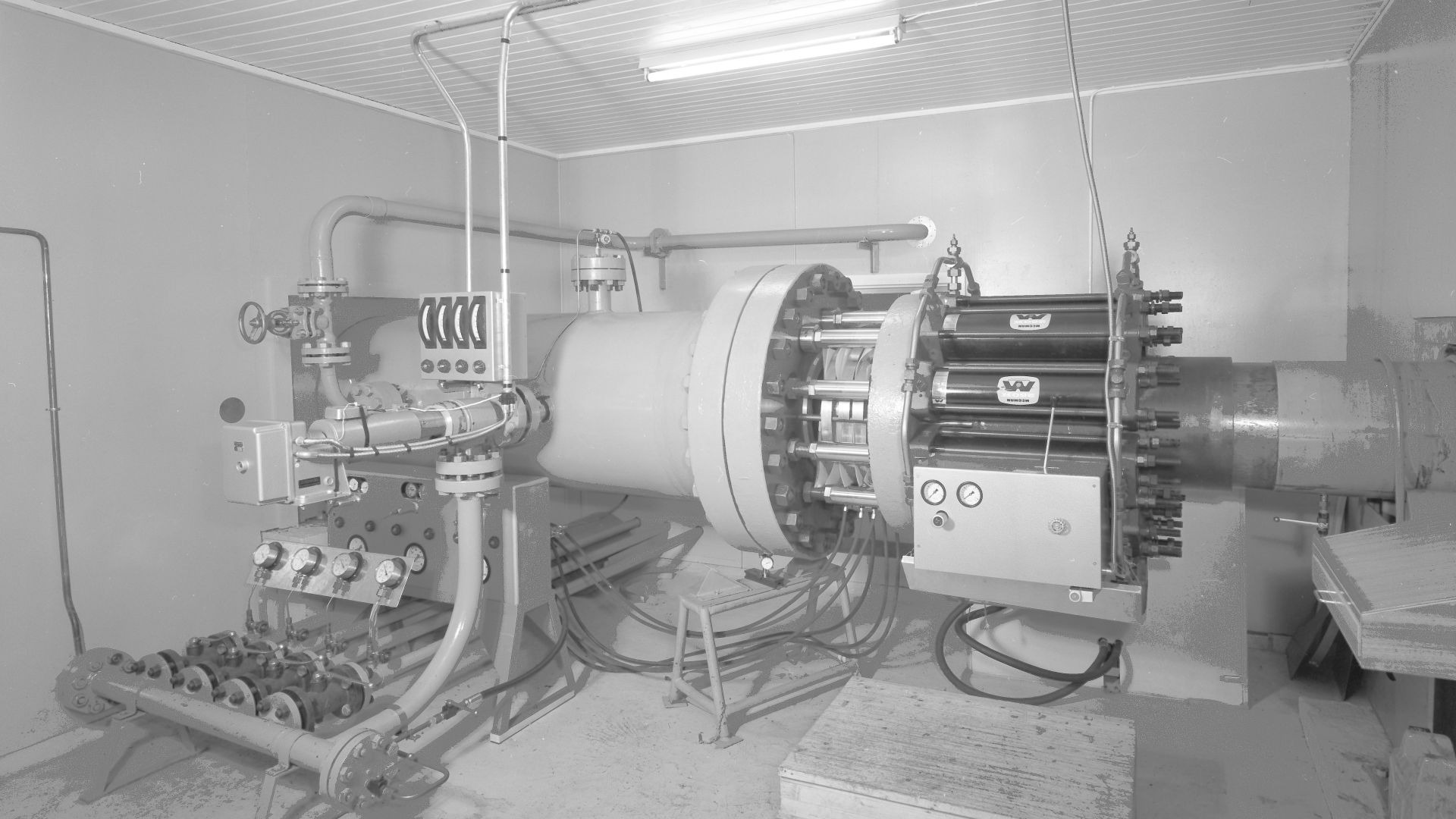
In a wind tunnel, many of the properties of a missile can be tested accurately.

A telemetry station on FFI’s premises at Kjeller. Telemetry means automatic transfer of measurable variables at remote points. The signals from the test firings with Penguin were carefully recorded and analysed.
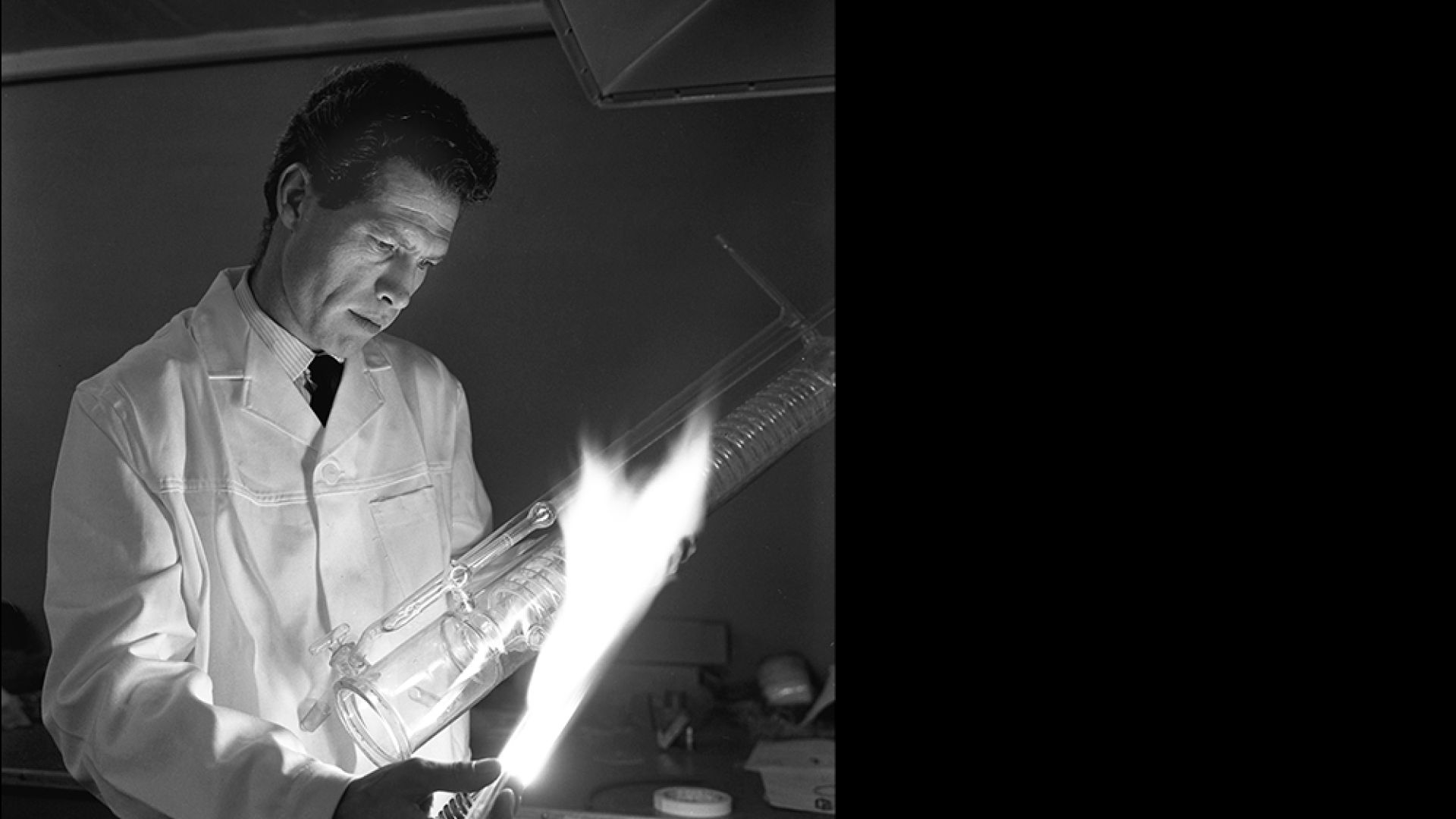
Jan Knudsen was FFI’s in-house glassblower. He contributed to solving challenging problems related to the components in Penguin’s ‘head’.
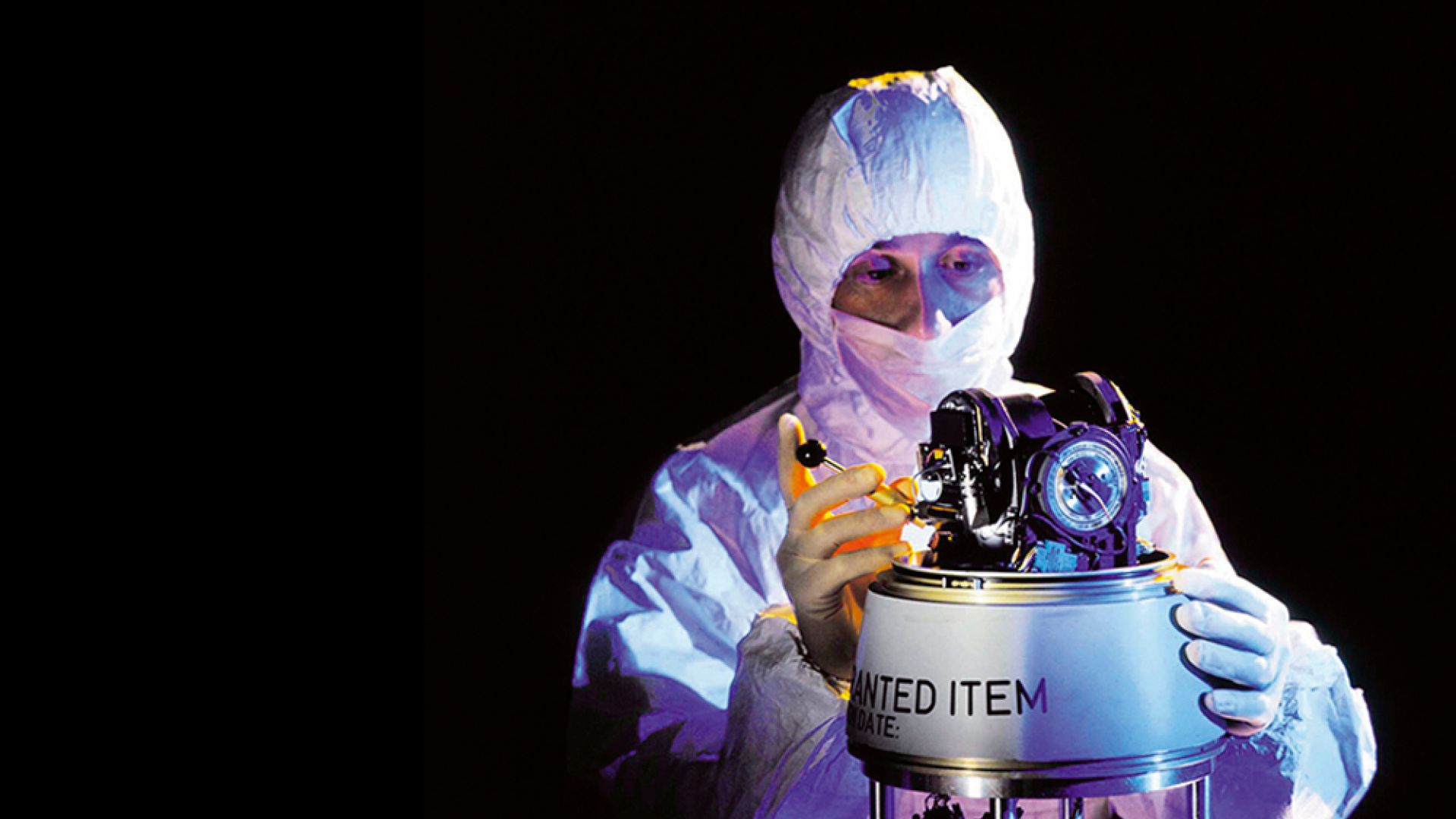
Penguin’s seeker was the crucial component of the missile. Here, FFI’s researchers and engineers had to find and develop their own solutions.

In 1973, Kongsberg delivered the first Penguin to the Royal Norwegian Navy. Numerous customers from other countries soon followed.
The development took a decade, from the first sketches on the drawing board to a functioning missile. Even though, for obvious reasons, it was not visible to most people, Penguin was the biggest research and development project in all of Norway in the 1960s and ‘70s. Norway was then able to deliver NATO’s first operational Naval Strike Missile.
What about the name Penguin? There are many theories about it, but no definitive answer.
What would become Penguin initially had a different project name. The name was 147XTFK/131 (Secret). This was not particularly easy to remember, even though everyone at FFI understood that it concerned the institute’s job number 147.
A common and understandable misconception is that it relates to the silhouette of the missile. The hanging wings might resemble those of a penguin. But the wings did not appear this way initially.
At FFI, there was a research director named Hans Christian Christensen at Department X for explosives. He was known as ‘Doctor X’. He gave the missile a bird name, in the same manner as its predecessor, Terne.
The name Penguin was easy to remember and easy to pronounce in all the NATO languages – and it was suitable as a brand name if the missile were to become an export product.
If anyone wonders what an FFI Penguin and the actual penguin bird have in common, this question has been answered by Research Director Karl Holberg. He is often described as the father of the Penguin Missile. Holberg said dryly: “The only similarity is that both navigate with the aid of thermal radiation”.
Wings like a duck
It is easy to recognise the Penguin Missile by its wings, eight in total. The final version was given wings in the front, known as canard fins. Canard is the French word for duck – i.e., duck wings. It was researcher OIav Birchner who decided that the missile should be guided with the use of such wings. Not everyone agreed with this idea. However, Birchner stood his ground. The critics were quickly silenced when it was revealed how effective this solution was.
When Norway’s first research and development project was launched, it was probably too big an undertaking for such a small country. Yet they were still successful, against all odds.
- Penguin biographer Hans Christian Erlandsen
Still in use
Penguin had several variants and was continuously further developed. The Norwegian Penguins are getting up in age but some are still operational. The tests on Wallops Island in 1990 resulted in the conclusions entailing that Penguin continues to be the dominant Naval Strike Missile on U.S. helicopters.
Penguin MK2/7 is still in use in Spain, Turkey, Greece, New Zealand and Brazil. Kongsberg has enough parts to manufacture and sell a smaller number of missiles but nowadays the Penguin activities mainly involve ten-year maintenance of those that have already been sold.
The next missile
There is an uninterrupted link from FFI’s Terne missile in the snow at Hallingskeid to the missile in the weapons bay of the F-35 fighter aircraft.
The expertise developed through the work on Terne and Penguin became a major advantage for the work on a new anti-ship missile, the Naval Strike Missile (NSM). FFI developed the concepts for the Naval Strike Missile in the late 1980s. The institute demonstrated a brand new, imaging missile seeker. Since then, FFI has supported the Norwegian Armed Forces by testing the missile and developing tactics for optimal utilisation. They developed a significant component: target recognition, which is the eye of the missile. If this does not work, the seeker is blind, and nothing will function.
NSM surpasses its predecessor as it has a very low radar signature. The missile manoeuvres even better and has a higher sensor capacity and computing power. As with Penguin, NSM can fly low above the surface of the water and would therefore be hidden to enemies nearly all the way to the target and the missile has a significantly longer range.
The Terne missiles were developed as an anti-submarine system. Kongsberg has now sketched almost the opposite: that the NSM missile can go be brought below the surface, on the inside of a submarine. The idea is to equip the German-manufactured submarines that are to replace the Ula class with such missiles. The idea is controversial. It remains to be seen if it is feasible.
Many of the ideas from NSM have also been included in the Joint Strike Missile (JSM). The Joint Strike Missile, produced by Kongsberg Defence & Aerospace, is currently the only cruise missile adapted to the F-35 weapons bay, and can therefore be carried internally. In this manner, the aircraft can maintain its stealth capabilities, and remain difficult to detect.
Large packages
The number of missiles sold is classified. The same applies to pricing. Typically, the number of missiles will vary between fewer than a hundred for smaller clients to several hundred for bigger clients.
One U.S. website has estimated the price of an NSM as approximately USD 2 million. Clients purchase more than just one missile, however. If these are not already adapted to a platform, for instance a vessel, truck or aircraft, it may cost up to several billion Norwegian kroner for these adjustments alone. For this reason, it is best to adapt for certain platforms and weapons, such in the case of the JSM and the F-35.
Clients also need support systems for the missiles, such as computer systems for planning and launching. Most purchase packages that include training, operations, service and maintenance throughout the lifespan of the missile system. This can generate major sales for the industry.
Now in 2022, FFI researchers are ready to take new steps. Their goal is to develop the missiles that will follow NSM and JSM. The work will involve many FFI employees from several professional fields. Triaxial Collaboration will always form the foundation. The ambition is for Norway to continue to create important missile systems for the Norwegian Armed Forces and its allies, with the objective of significant value creation in Norwegian industry.
Against all odds
It might not have turned out this way. The firing on Wallops Island in 1990, when Sandy had to press the emergency button and destroy Kongberg’s newest pride, shows how small the margins between success and failure actually are.
An incident in 1979 was one of the more absurd. Kongsberg had a facility in Narvik. From here, employees were to send a trainload of launch ramps for Penguin. The ramps were destined for Haakonsvern in Bergen.
All regulations were followed. The car containing the ramps was loaded and sealed. The train connection from here to the rest of Norway goes via Sweden, first on the tracks of the iron ore trains that go between Narvik and the mining town of Kiruna.
In Kiruna, someone made a mistake. The Penguin load was connected to a train which was not destined for Bergen. Instead, the journey continued to the Baltic Sea; to Sassnitz, then the German Democratic Republic (GDR). Here, behind the Iron Curtain, it was clear that no one was aware of what they had received. A wanted notice was issued by the Norwegian railway company, NSB. Helpfully, systematic Eastern Germans ensured that the erroneous shipment was put on the right track.
Someone probably breathed a sigh of relief when the car rolled into Bergen Station: The sealing of the cargo hold was unbroken.


